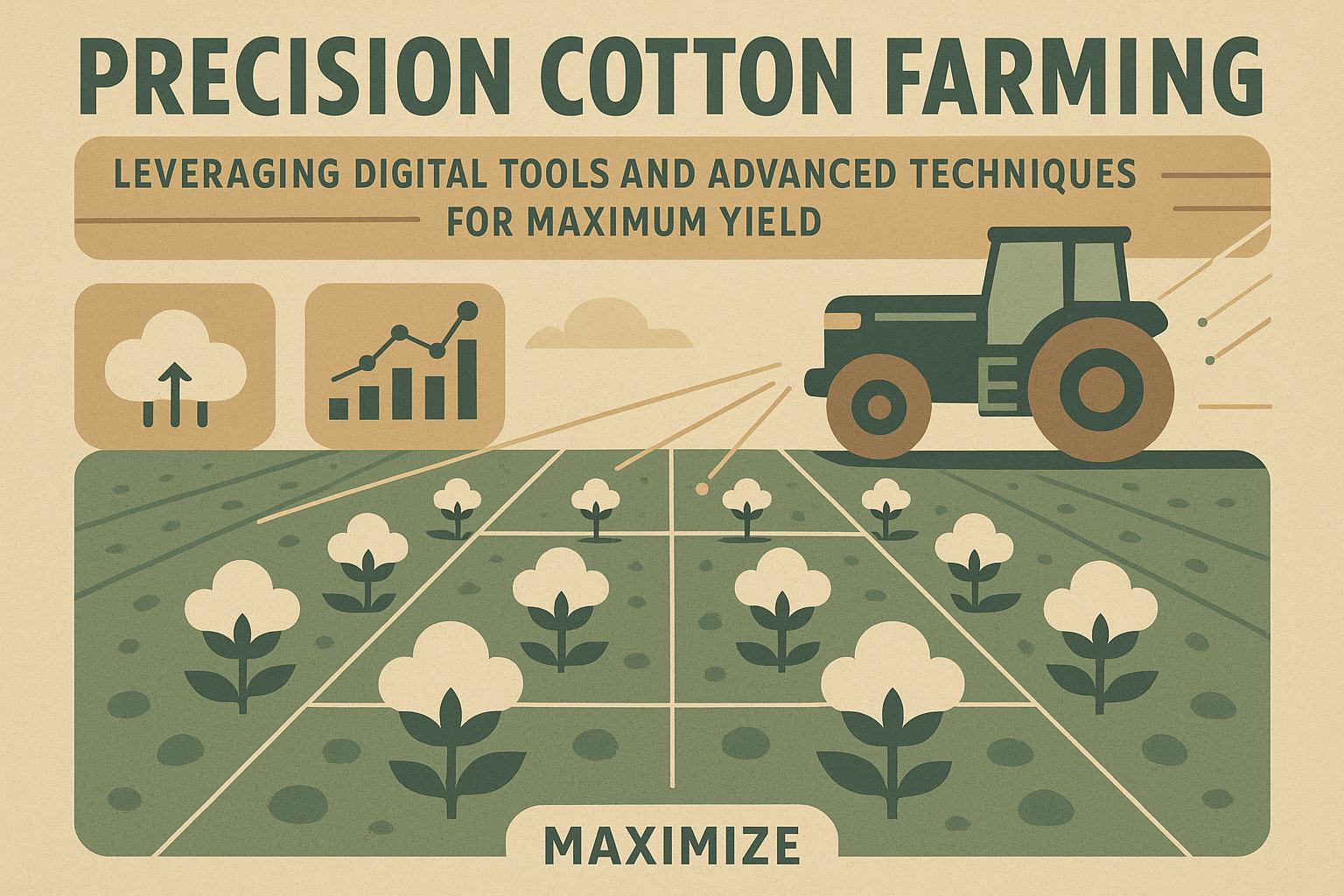Cotton ginning requires a delicate balance between reducing energy use and preserving fiber quality. Energy costs account for about 25% of ginning expenses, but cutting energy use can sometimes harm fiber length and strength. Here's what you need to know:
- Energy Use: U.S. cotton gins consume 52.3 kWh of electricity per bale on average. Drying (using gas/LPG) and saw operation are major energy consumers.
- Fiber Quality: Over-drying and narrow saw spacing can damage fibers, reducing length and strength.
- Advancements: Modern tools like optical sensors and advanced control systems optimize energy use while maintaining fiber quality.
- Trade-offs: Faster processing saves energy but risks fiber damage. Slower, careful ginning ensures better quality but raises costs.
Quick Comparison
| Aspect | Energy Efficiency Focus | Fiber Quality Focus |
|---|---|---|
| Processing Speed | Faster throughput | Slower, careful ginning |
| Moisture Control | Quick drying | Precise moisture levels |
| Equipment Settings | Wider saw spacing | Narrower saw spacing |
| Mechanical Impact | Higher stress on fibers | Lower fiber damage |
| Operating Costs | Lower costs | Higher costs |
| Quality Metrics | More variability | Better consistency |
The Amazing Cotton Gin - Understanding What It Does
Energy Efficiency in Ginning
Energy efficiency is a key focus in modern cotton ginning, aiming to cut costs and reduce environmental impact while keeping productivity high.
Factors Affecting Energy Efficiency
Several operational factors directly influence energy use in ginning. Processing rates and equipment utilization are particularly important. Keeping flow rates high and minimizing downtime helps avoid unnecessary energy waste.
| Operating Factor | Energy Impact | Optimization Strategy |
|---|---|---|
| Processing Rate | Strong effect on energy per bale | Maintain steady, high flow rates |
| System Downtime | Leads to wasted energy | Use automated shutdown protocols |
| Material Flow | Impacts overall energy consumption | Improve conveying system design |
| Equipment Load | Affects power demands | Ensure balanced machinery usage |
Advancements in Ginning Technology
New technologies, such as dual saw cylinders and mechanical conveying systems, have helped lower energy use without sacrificing performance. Advanced control systems now monitor real-time conditions, adjusting operations to maintain efficiency and consistent output. However, operators must carefully manage these processes to avoid compromising fiber quality, especially during drying and cleaning.
Challenges to Consistent Efficiency
Achieving steady energy efficiency isn’t without its hurdles. Weather variations and cotton types can significantly alter energy demands, complicating standardization efforts. Differences in trash content and moisture levels require constant process adjustments to maintain efficiency.
Fluctuating loads on saw cylinders can cause deformation, reducing both efficiency and equipment lifespan [6]. Keeping systems running efficiently means regular maintenance and ongoing process improvements. Balancing energy efficiency with fiber quality remains a continuous challenge, which will be further discussed in the next section.
sbb-itb-0e617ca
Fiber Quality in Cotton Ginning
Maintaining fiber quality during ginning involves paying close attention to mechanical processes, environmental factors, and equipment design.
Impact of Ginning on Fiber Quality
The mechanical ginning process can influence both fiber length and strength. However, poor handling may lead to severe degradation. Research shows that higher net ginning energy correlates positively with fiber length (0.26, p < 0.001) and strength (0.23, p < 0.001) [1].
| Saw Spacing | Mechanical Damage | Interrupted Filaments |
|---|---|---|
| 22mm | 19.2% | 9.3% |
| 16mm | 45% | 18% |
Environmental Effects on Fiber Quality
Temperature and humidity play a big role in fiber quality during ginning. Adjusting moisture content and drying temperature is crucial to avoid fiber damage while balancing energy use [2].
In addition to these environmental factors, the mechanical aspects of the ginning process are just as important in determining fiber quality.
Mechanical Damage and Ginning
The design and operation of ginning equipment are key to preserving fiber integrity. Modern gins now incorporate advanced technologies to reduce stress on fibers. Factors like saw cylinder spacing, dynamic load management, and regular maintenance are essential for minimizing mechanical damage.
The choice of cotton varieties also impacts ginning efficiency. Certain cultivars, such as those from the okra-leaf and semi-naked-seed groups, are known for higher ginning rates without sacrificing fiber quality [1]. Additionally, advanced sensing systems are used to detect and remove contaminants while continuously monitoring fiber quality throughout the ginning process [3].
Balancing Energy Efficiency and Fiber Quality
Cotton ginning operations face a tough challenge: improving energy use while maintaining high fiber quality. Research indicates that higher ginning energy often leads to longer, stronger fibers. The key is finding a balance that works.
Ways to Improve
Energy audits help pinpoint waste in air systems, motors, and drying fuel usage, offering clear areas for improvement [4]. Keeping material flow steady and running machines at full capacity not only cuts energy costs but also protects fiber quality [2]. Sensors that monitor the process in real time can adjust energy use and maintain fiber integrity simultaneously.
Comparing Trade-offs
| Aspect | Focus on Energy Efficiency | Focus on Fiber Quality |
|---|---|---|
| Processing Speed | Faster throughput | Slower, careful ginning |
| Moisture Control | Quick drying | Precise moisture levels |
| Equipment Settings | Wider saw spacing | Narrower saw spacing |
| Mechanical Impact | Higher stress on fibers | Lower fiber damage |
| Operating Costs | Lower costs | Higher costs |
| Quality Metrics | More variability | Better consistency |
This table shows how prioritizing one goal often impacts the other, making equipment design crucial for balancing these needs.
Equipment Design and Balance
Modern ginning machines are built to improve both energy efficiency and fiber quality. Features like automatic feed controls and machines with matching capacities streamline the process [5]. Using mechanical systems over pneumatic ones can lower energy use and reduce fiber damage [4].
Adjusting saw spacing is another critical factor - it directly affects both energy consumption and the risk of fiber damage. Proper load balancing and tooth design can also make a big difference [5]. Additionally, UAV technology now offers better moisture detection, allowing for more precise drying temperatures that save energy and protect fiber quality [3].
Conclusion
Main Points
Managing energy efficiency while maintaining fiber quality requires careful attention to various factors. Modern sensing technologies now make it possible to achieve consistent fiber quality while using less energy. Additionally, mechanical conveying systems help lower energy consumption and preserve fiber integrity.
Additional Resources
Cotton gin operators looking to put these ideas into practice can tap into several helpful resources. The USDA-ARS Cotton Ginning Research Unit offers detailed studies and technical advice on improving energy efficiency [4].
Another useful tool is cottongins.org, which helps operators locate gins by region, connect with industry professionals, and stay updated on the latest trends and opportunities in the field.
Key Implementation Steps:
- Perform regular energy audits to pinpoint efficiency gaps
- Ensure proper moisture levels during processing
- Upgrade to advanced sensing and control systems
- Explore mechanical conveying options
- Choose cotton varieties that balance energy use and fiber quality


